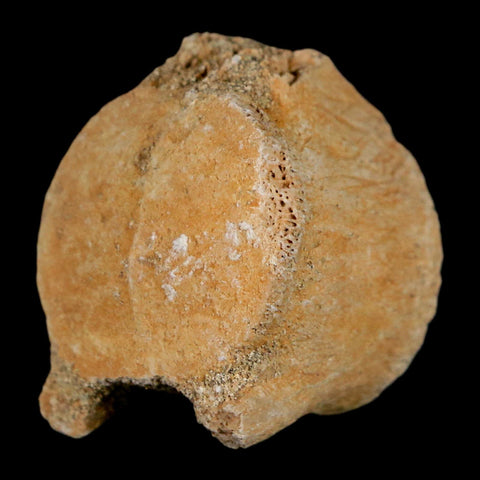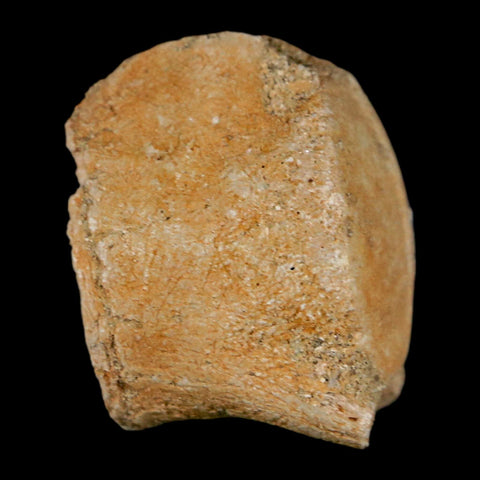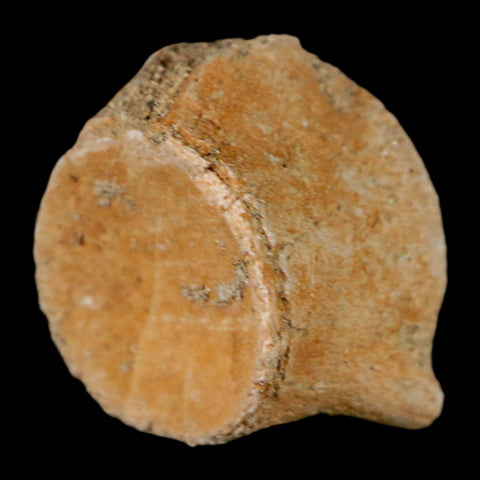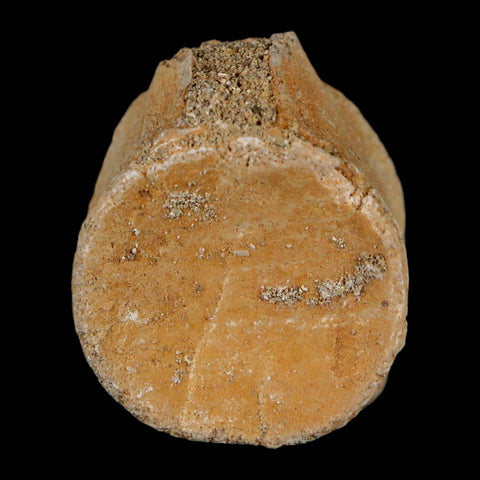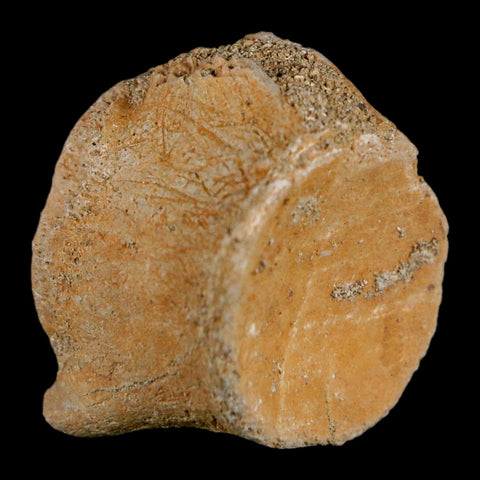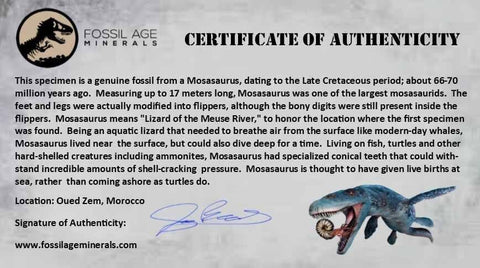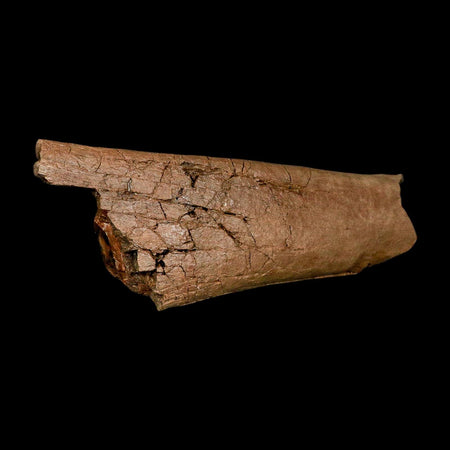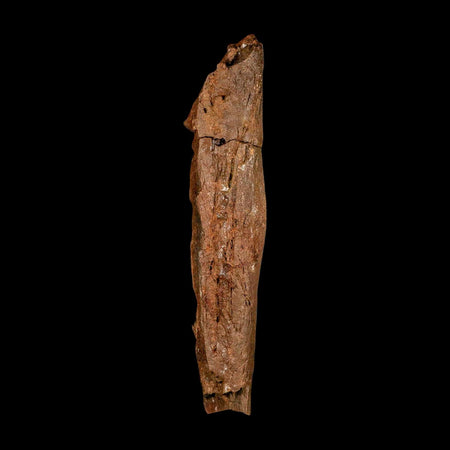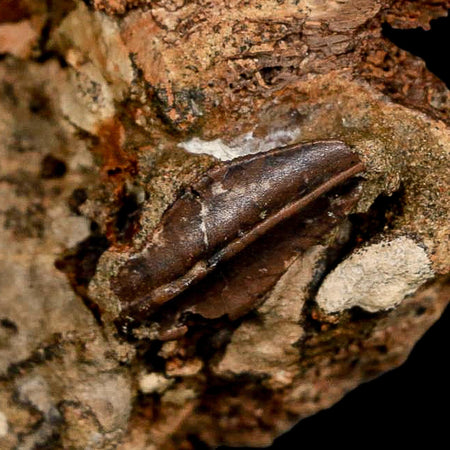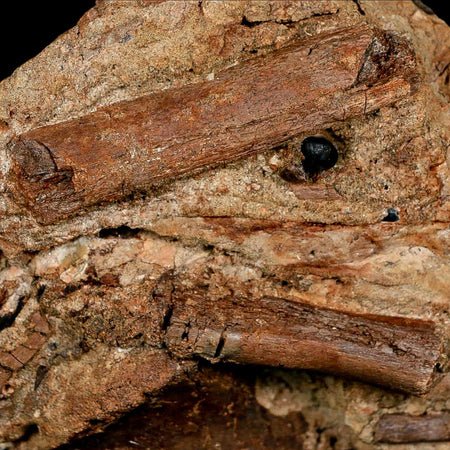1.1" Mosasaur Fossil Vertebrae Bone Upper Cretaceous Dinosaur Era Morocco COA
Location: Khouribga, Morocco
Weight: 0.5 Ounces
Vertebrae Dimensions: 1.1 Inches Long, 0.8 Inches Wide, 0.7 Inches Thick
Comes with a Certificate of Authenticity.
The item pictured is the one you will receive.
100 - 66 Million Years old, Upper Cretaceous, Maastrichtian Epoch.
Name: Mosasaurus
Named By: Dollo - 1889.
Diet: Carnivore.
Size: Depending upon the species, Mosasaurs could range between 6 to possibly just under 14 meters in length.
Known locations: Fossil locations suggest a worldwide distribution, but are especially well-known from Europe and North America.
Time period: Campanian to Maastrichtian of the Cretaceous.
Mosasaurs were the largest lizards known to have existed, reaching nearly 60 feet in length with skulls measuring about 6 feet. These formidable marine reptiles were powerful swimmers, spending their entire lives in the ocean. Their elongated, muscular bodies featured tails and limbs adapted specifically for aquatic movement. They likely propelled themselves with a finned tail while maneuvering by undulating their bodies in a serpentine fashion and steering with small, webbed feet. Mosasaurs thrived during the Late Cretaceous period of the Mesozoic Era, roughly 96 to 65 million years ago. As apex predators, they fed on fish, sea urchins, turtles, and shellfish. They coexisted with many dinosaur species before becoming extinct during the Cretaceous-Paleogene mass extinction event.

Please be aware of the nature of fossils:
Being buried under the ground for millions of years under tons of pressure tends to be rough. No fossil comes out of the ground whole and perfect. Most fossils have undergone some restoration, while others are altered by man simply to enhance their presentation in different ways. The workers in the United States do a very professional job of unearthing and preserving these natural treasures; however, natural cracks are commonly visible on the surface. These are part of the natural beauty of the fossil and are not considered defects.


